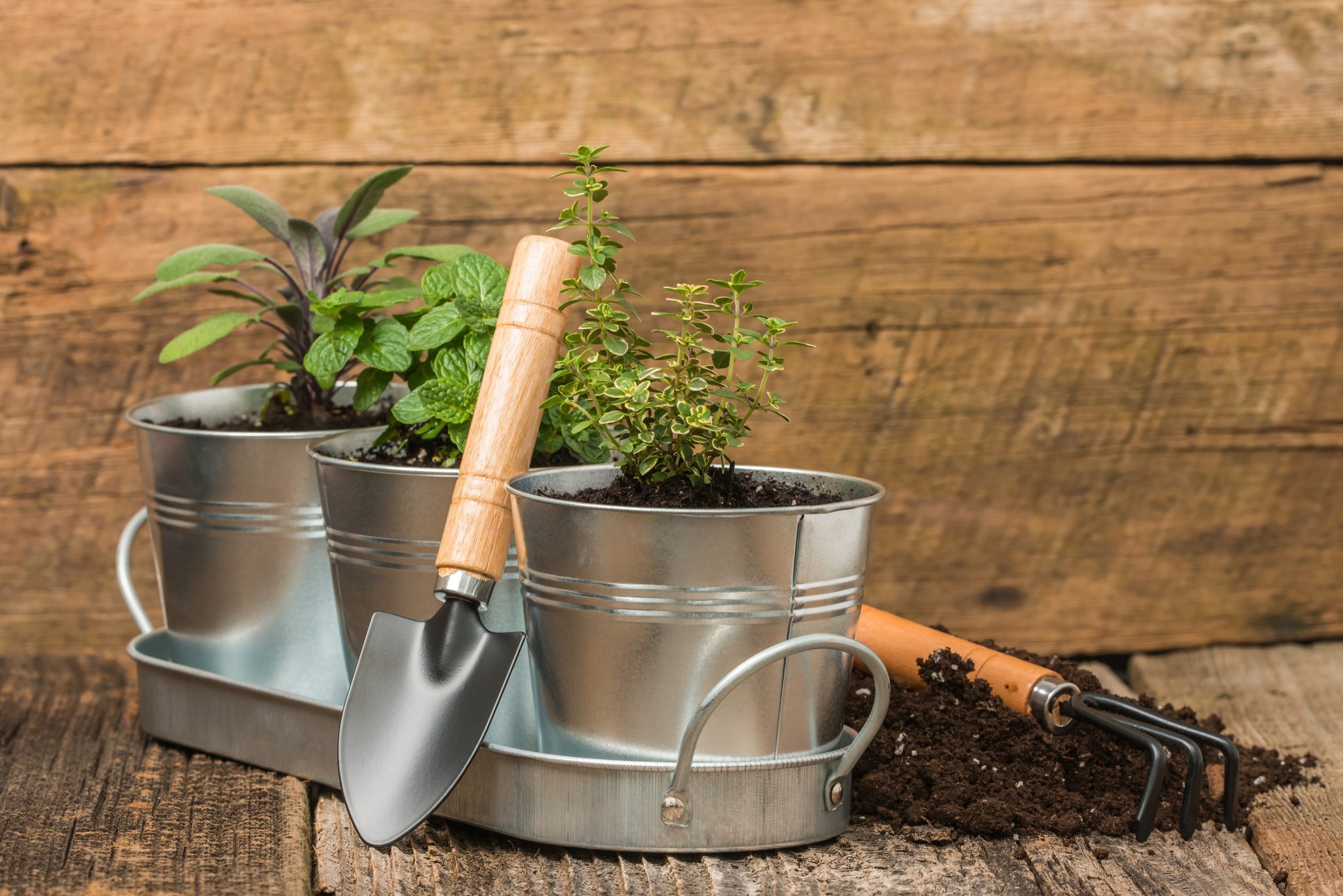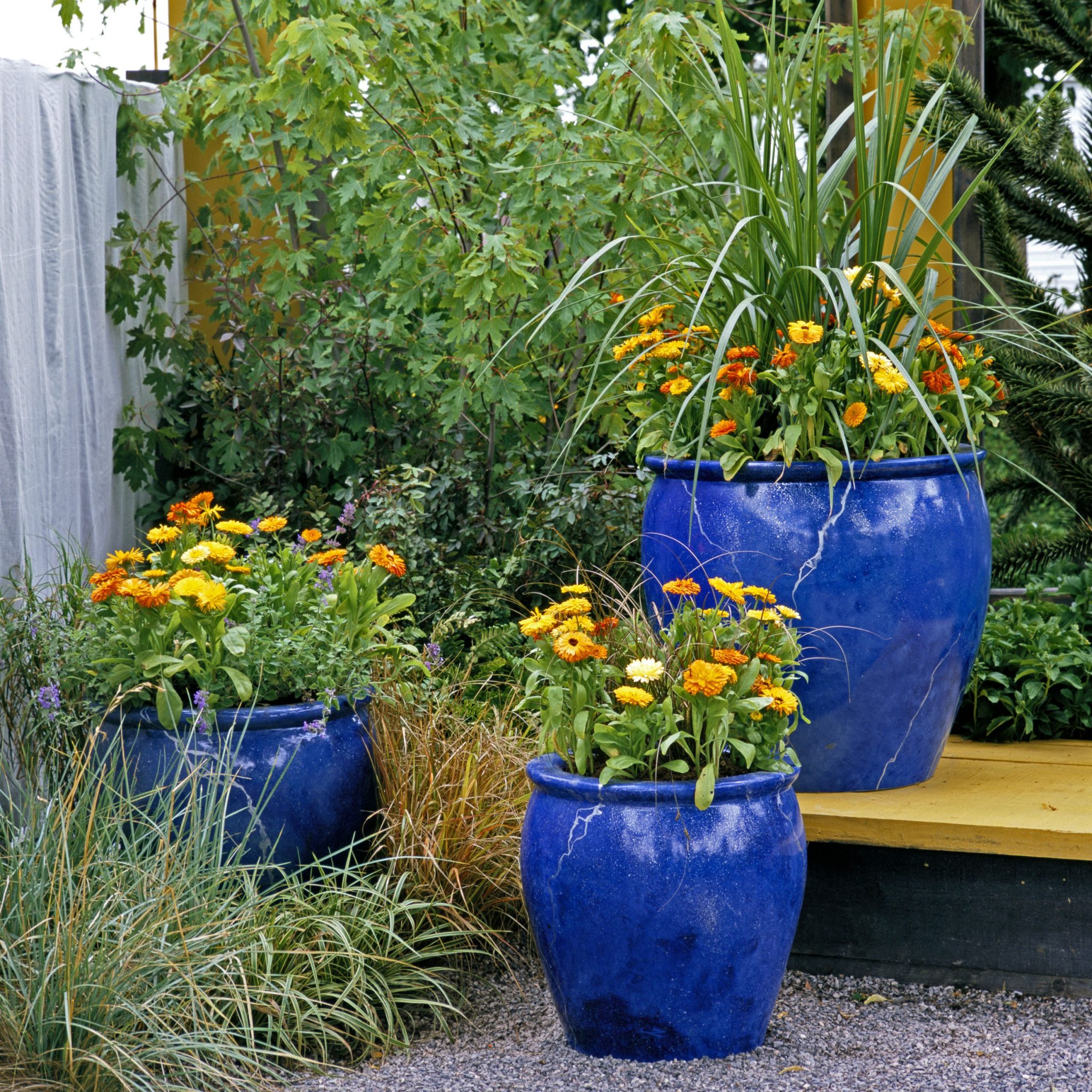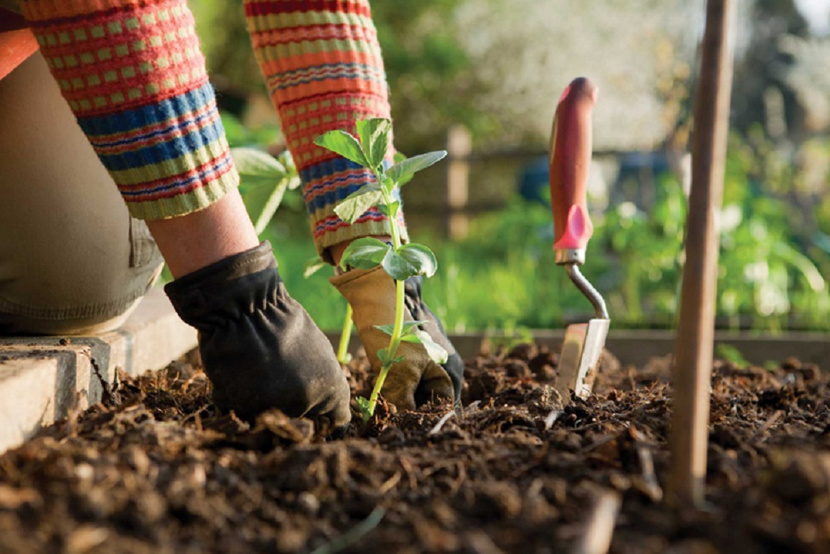Introduction: The Joy of Pot Gardening
Pot gardening, also known as container gardening, is a rewarding and accessible hobby for garden enthusiasts of all levels. This approach to gardening allows individuals to cultivate a wide variety of plants in a limited space, making it an ideal choice for urban dwellers, apartment residents, or those with small yards. The purpose of this article is to provide pot gardening tips for beginners, offering a comprehensive guide to get started and ensure success in their new endeavor.
Choosing the Right Containers: A Crucial First Step
Pot gardening relies heavily on the choice of containers, as they serve as the plants’ primary habitat. For beginners, understanding the factors that contribute to a suitable pot is essential. The material, size, and drainage of the container all play crucial roles in the health and growth of pot gardening plants.
Various types of pots are available for pot gardening, including terracotta, plastic, and self-watering containers. Each material has its advantages and disadvantages. For instance, terracotta pots are porous, allowing for better air circulation and water evaporation, but they are also heavy and prone to cracking in cold weather. Plastic pots, on the other hand, are lightweight and inexpensive, yet they may retain too much heat and moisture, potentially causing root rot.
Self-watering containers, a more recent innovation, offer a convenient solution for busy gardeners. These pots have built-in reservoirs that supply water to the plants gradually, reducing the frequency of watering. However, they may not be suitable for all plant species, so it’s essential to research the specific needs of each plant before selecting a container.
Regardless of the material, proper drainage is vital for pot gardening success. Adequate drainage ensures that excess water can escape, preventing root rot and other moisture-related issues. Choose pots with drainage holes or create your own by carefully drilling holes in the bottom of the container.
Selecting the Perfect Potting Soil: A Foundation for Success
Potting soil plays a critical role in pot gardening, as it provides the necessary nutrients and environment for plants to thrive. Unlike garden soil, potting soil is specifically formulated for container gardening, offering a well-draining, moisture-retentive, and rich organic matter mix. These characteristics are essential for pot gardening success, as they promote healthy root growth and prevent waterlogging.
When selecting potting soil, consider the following factors:
- Well-draining: A high-quality potting soil should allow excess water to drain easily, preventing root rot and other moisture-related issues.
- Moisture-retentive: While drainage is crucial, it’s equally important that the potting soil retains enough moisture to support the plants’ needs. Look for soils with moisture-retaining agents or additains like coconut coir or peat moss.
- Rich in organic matter: Organic matter, such as compost or well-rotted manure, provides essential nutrients for plants. Choose potting soils with a high organic matter content to ensure your plants receive the necessary nourishment.
Additionally, consider purchasing potting soil that is specifically tailored to the type of plants you intend to grow. For example, some potting soils are designed for vegetables, while others are better suited for succulents or flowering plants. By selecting the right potting soil, you create a strong foundation for your pot gardening endeavors.
How to Plant in Pots: A ‘How-To’ Guide for Beginners
Planting in pots is a straightforward process that can yield beautiful and thriving plants with the right approach. Follow this step-by-step guide to ensure success in your pot gardening endeavors.
- Prepare the pot: Before planting, ensure the pot is clean and has adequate drainage holes. If necessary, create additional holes to promote proper drainage.
- Choose the right plants: Select plants that are suitable for pot gardening and thrive in container environments. Be mindful of the plant’s mature size and growth habits to ensure it has enough space in the pot.
- Fill the pot with potting soil: Add a layer of potting soil to the bottom of the pot, ensuring it is deep enough to support the plant’s root system. Gently remove the plant from its nursery pot and loosen the roots before placing it in the new pot.
- Space plants appropriately: Depending on the number of plants and their size, adjust the spacing to allow for proper growth and air circulation. Generally, plants should be spaced far enough apart to prevent overcrowding, which can lead to disease and poor growth.
- Water and fertilize new plantings: After planting, water the plants thoroughly, ensuring the potting soil is evenly moist. Fertilize the plants according to the manufacturer’s instructions or based on the specific needs of the plant species.
By following these steps, you can create a thriving pot garden that brings joy and beauty to your living space. Remember to be patient, as pot gardening often requires time and dedication to achieve optimal results.
Caring for Your Pot Garden: Essential Maintenance Tips
Proper care and maintenance are vital for a thriving pot garden. By following these essential tips, you can ensure your plants remain healthy and vibrant throughout their growth cycle.
Watering
Watering is a critical aspect of pot gardening. Overwatering or underwatering can negatively impact plant health. To determine when to water, check the moisture level of the potting soil by inserting your finger about an inch deep. If the soil feels dry, it’s time to water. Be sure to water thoroughly until you see water draining from the bottom of the pot.
Fertilizing
Potting soil can quickly become depleted of nutrients, making regular fertilization essential. Use a balanced, water-soluble fertilizer according to the manufacturer’s instructions or based on the specific needs of your plants. Keep in mind that some plants, like succulents, require less frequent fertilization than others.
Pruning
Pruning is an effective way to maintain plant shape, encourage bushier growth, and remove dead or damaged foliage. Use clean, sharp pruning shears to make precise cuts. Prune sparingly, as over-pruning can stress the plant and hinder its growth.
Pest and Disease Management
Common pests and diseases in pot gardening include aphids, spider mites, powdery mildew, and root rot. To identify and address these issues, regularly inspect your plants for signs of distress, such as discolored leaves, stunted growth, or sticky residue. If you notice any issues, consider using organic pest control methods or fungicides to treat the problem.
By following these essential care and maintenance tips, you can enjoy a thriving pot garden that brings beauty and joy to your living space. Remember, consistency is key when it comes to pot gardening success.
Seasonal Considerations: Adapting to Changing Seasons
Pot gardening requires adjustments as the seasons change, ensuring your plants remain healthy and vibrant throughout the year. By understanding these seasonal variations, you can better care for your pot garden and enjoy its beauty in every season.
Adjusting Watering Schedules
Watering schedules should be adjusted based on the season and the specific needs of your plants. During the hot summer months, plants typically require more frequent watering, while during cooler fall and winter seasons, watering can be reduced. Always check the moisture level of the potting soil before watering to prevent overwatering, which can lead to root rot and other issues.
Protecting Plants from Extreme Temperatures
Extreme temperatures, both hot and cold, can negatively impact pot gardens. During hot weather, place pots in a shaded area to protect them from direct sunlight. In colder temperatures, consider moving pots indoors or grouping them together to create a microclimate that retains heat. Use insulating materials, like bubble wrap or frost blankets, to protect plants from frost damage.
Planning for Overwintering Tender Plants
Some pot gardening plants are not winter-hardy and require special care during the colder months. To overwinter tender plants, consider the following options:
- Bring pots indoors: Move plants to a sunny indoor location, like a windowsill or sunroom, to protect them from frost damage.
- Dig up and store bulbs: Lift bulbs from the pots, clean them, and store them in a cool, dry place until the next growing season.
- Insulate pots: Use insulating materials, like straw or Styrofoam, to protect the roots of plants that must remain outdoors during the winter.
By understanding the seasonal considerations of pot gardening, you can better care for your plants and enjoy their beauty throughout the year. Remember, adapting to changing seasons is an essential aspect of successful pot gardening.
Maximizing Space: Vertical Gardening and Window Boxes
Limited space should not hinder your passion for pot gardening. By incorporating vertical gardening and window boxes, you can create a lush, vibrant garden in even the smallest of areas. This section will explore creative ways to make the most of your space and provide tips on selecting appropriate plants and installation techniques.
Vertical Gardening
Vertical gardening involves growing plants on walls, fences, or other vertical surfaces. This approach offers several benefits, including reduced space requirements, improved air quality, and increased visual interest. To create a successful vertical garden, consider the following:
- Select appropriate plants: Choose plants that thrive in vertical environments, such as ivy, ferns, or small flowering plants.
- Use the right growing medium: Opt for lightweight, moisture-retentive potting soil to ensure proper drainage and nutrient availability.
- Install a supportive structure: Create a sturdy structure, like a trellis or wall-mounted planter, to provide stability and support for your plants.
Window Boxes
Window boxes are an excellent option for those with limited space or for adding visual appeal to a home’s exterior. To create a thriving window box garden, keep the following in mind:
- Select plants with similar growing requirements: Combine plants that have similar water, sunlight, and fertilizer needs to ensure optimal growth.
- Consider the window’s exposure: Place sun-loving plants in windows that receive ample sunlight, while shade-tolerant plants are better suited for north-facing windows.
- Ensure proper drainage: Use a potting soil with good drainage properties and drill holes in the bottom of the window box to prevent waterlogging.
By exploring vertical gardening and window boxes, you can maximize your space and enjoy the beauty of pot gardening, even in the smallest of areas. Remember, creativity and innovation are key when it comes to making the most of your gardening environment.
Conclusion: Embracing the Pot Gardening Lifestyle
Pot gardening offers a world of opportunities for beginners to explore their green thumb and cultivate a vibrant, thriving garden. By following the expert tips and tricks provided in this article, you can create a beautiful pot garden that brings joy and serenity to your living space.
From selecting the right containers and potting soil to planting, maintaining, and adapting to changing seasons, this comprehensive guide has covered essential aspects of pot gardening. By embracing these principles, you can enjoy the many benefits of pot gardening, such as improved air quality, increased curb appeal, and a deeper connection with nature.
As a beginner, remember that patience and persistence are key. Pot gardening is a rewarding journey filled with learning opportunities and endless possibilities. By continuing to educate yourself on best practices and innovative techniques, you can enhance your gardening skills and create a stunning pot garden that reflects your unique style and personality.
To further your pot gardening knowledge, consider exploring additional resources, attending workshops, or joining local gardening clubs. These experiences will not only deepen your understanding of pot gardening but also connect you with a community of like-minded individuals who share your passion for gardening.
Now that you have the tools and knowledge to embark on your pot gardening journey, it’s time to get started! Embrace the joy of pot gardening and watch as your plants flourish and transform your living space into a lush, verdant oasis.
https://www.youtube.com/watch?v=8_43iBdYBDM






